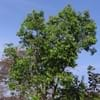Life Span
Perennial
Perennial
Type
Fruit
Tender Perennial
Origin
Europe, Mediterranean
North America, Mexico, Latin America and the Caribbean, Caribbean, Central America, South America
Types
Not Available
Guzmania lingulata, Guzmania monostachia
Number of Varieties
Not Available
Habitat
Open Forest, Terrestrial
Hills, Moist Soils
USDA Hardiness Zone
Not Available
Not Available
AHS Heat Zone
Not Available
Not Available
Sunset Zone
2a, 2b, 3a, 3b, 4, 5, 6, 7, 8, 9, 10, 11, 12, 13, 14, 15, 16, 17, 18, 19, 20, 21, 22, 23
Not Available
Habit
Upright/Erect
Not Available
Minimum Width
Not Available
Flower Color
Not Available
Red
Flower Color Modifier
Not Available
Bicolor
Fruit Color
Not Available
Not Available
Leaf Color in Spring
Not Available
Light Green, Not Available
Leaf Color in Summer
Not Available
Not Available
Leaf Color in Fall
Not Available
Not Available
Leaf Color in Winter
Light Green
Light Green
Plant Season
Spring, Summer, Fall
Spring, Summer, Fall, Winter
Sunlight
Full Sun
Indirect sunlight
Growth Rate
Medium
Medium
Type of Soil
Clay, Loam, Sand
Loamy, Sandy
The pH of Soil
Acidic, Neutral, Alkaline
Slightly Acidic
Soil Drainage
Average
Loamy
Bloom Time
Spring
Late Autumn
Repeat Bloomer
No
Not Available
Tolerances
Drought
Dry soil, Shallow soil
Where to Plant?
Ground
Container
How to Plant?
Seedlings, Stem Planting, Transplanting
Leaf Cutting, Transplanting
Plant Maintenance
Medium
Medium
Watering Requirements
Water Deeply, Water when top layer of soil becomes dry
Do Not over Water
In Summer
Lots of watering
Lots of watering
In Spring
Moderate
Moderate
In Winter
Average Water
Average Water
Soil pH
Not Available
Slightly Acidic
Soil Type
Not Available
Loamy, Sandy
Soil Drainage Capacity
Not Available
Well drained
Sun Exposure
Not Available
Bright Indirect Sunlight
Pruning
Remove damaged leaves, Remove dead branches, Remove dead leaves
Remove damaged leaves
Fertilizers
All-Purpose Liquid Fertilizer
All-Purpose Liquid Fertilizer, slow-release fertilizers
Pests and Diseases
Red blotch
Bacteria wilt, Phytophthora Root Rot, Red blotch
Plant Tolerance
Drought
Drought
Flower Petal Number
Not Available
Single
Showy Fruit
Yes
Not Available
Edible Fruit
Yes
Not Available
Fragrant Fruit
No
Not Available
Foliage Texture
Not Available
Coarse
Foliage Sheen
Not Available
Not Available
Self-Sowing
No
Not Available
Attracts
Not Available
Flying insects, Moths
Allergy
Itchiness, Runny nose, Swelling, Throat itching, Watery eyes
Rash, Throat itching
Aesthetic Uses
Not Used For Aesthetic Purpose
Showy Purposes
Beauty Benefits
Not Available
Making cosmetics, Removes pimples
Edible Uses
Yes
Sometimes
Environmental Uses
Air purification
Forms dense stands, Prevent Soil Erosion
Medicinal Uses
anti-cancer, Bone strength, Digestive disorders, High cholestrol, Immunity, Improve heart health
Acne, Eczema, Laxative
Part of Plant Used
Fruits
Leaves
Other Uses
Used As Food, Used for its medicinal properties, Wood is used for making furniture
Application in Handicrafts, Making Shampoo
Used As Indoor Plant
No
Sometimes
Used As Outdoor Plant
Yes
Yes
Garden Design
Not Available
Not Available
Botanical Name
PRUNUS insititia 'Blue Violet Damson'
GUZMANIA
Common Name
Blue Violet Damson Plum, Damson
Guzmania, Torch Bromeliad
In Hindi
जामुन
Guzmania lingulata
In German
Zwetschgen
Guzmania lingulata
In French
prune de Damas
Guzmania lingulata
In Spanish
ciruela ciruela
Guzmania lingulata
In Greek
κορόμηλο δαμάσκηνο
Guzmania lingulata
In Portuguese
damson ameixa
Guzmania lingulata
In Polish
mirabelki
Guzmania lingulata
In Latin
damson plum
Guzmania lingulata
Phylum
Magnoliophyta
Angiosperms
Class
Magnoliopsida
Liliopsida
Family
Rosaceae
Bromeliaceae
Clade
Angiosperms, Eudicots, Rosids
Commelinids
Tribe
Not Available
Not Available
Subfamily
Amygdaloideae
Tillandsioideae.
Importance of Damson and Guzmania
Want to have the most appropriate plant for your garden? You might want to know the importance of Damson and Guzmania. Basically, these two plants vary in many aspects. Compare Damson and Guzmania as they differ in many characteristics such as their life, care, benefits, facts, etc. Every gardener must at least have the slightest clue about the plants he wants to plant in his garden. Compare their benefits, which differ in many ways like facts and uses. The medicinal use of Damson is anti-cancer, Bone strength, Digestive disorders, High cholestrol, Immunity and Improve heart health whereas of Guzmania is Acne, Eczema and Laxative. Damson has beauty benefits as follows: Not Available while Guzmania has beauty benefits as follows: Not Available.
Compare Facts of Damson vs Guzmania
How to choose the best garden plant for your garden depending upon its facts? Here garden plant comparison will help you to solve this query. Compare the facts of Damson vs Guzmania and know which one to choose. As garden plants have benefits and other uses, allergy is also a major drawback of plants for some people. Allergic reactions of Damson are Itchiness, Runny nose, Swelling, Throat itching and Watery eyes whereas of Guzmania have Rash and Throat itching respectively. Having a fruit bearing plant in your garden can be a plus point of your garden. Damson has showy fruits and Guzmania has no showy fruits. Also Damson is not flowering and Guzmania is not flowering . You can compare Damson and Guzmania facts and facts of other plants too.





